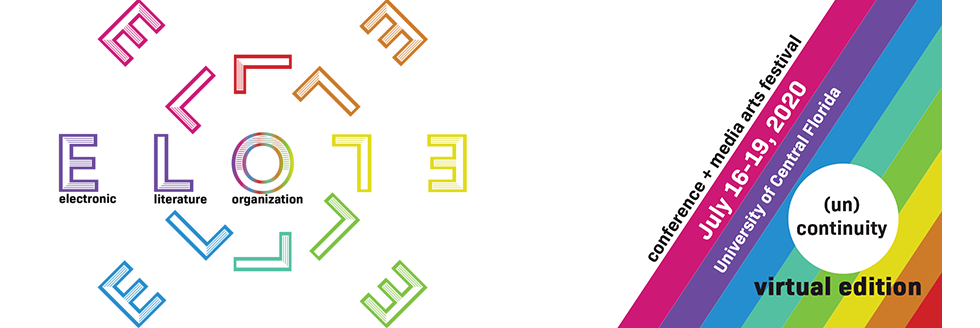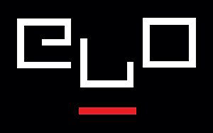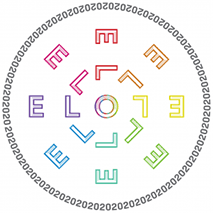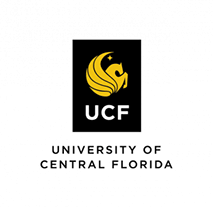Proposal Title
Loading...
Submission Type
Conference Talk - Individual
Abstract
Oralengas go to school. A first experiment
At the 2019 Electronic Literature Organization Conference, in Cork, a team from the University of Coimbra presented the project “Murals and Literature – A Digital Creation for an Educational Context” (2018-2020) and its three different age levels. We focused our attention on the second level, which targets children that have just learned how to read. Meanwhile we felt the need to improve some modal expressions, namely regarding music. As our purpose is mainly didactic, we found that music and other elements could be distracting for young readers, who have to make a great reading effort to follow textual mutations on the interface, which might overload their cognitive capacities (Herrlinger et alii, 2017). So, in order to maintain the aesthetic purposes and for multimodality to work, we transferred the musical excerpts to another screen, combining them with the images from Costa Pinheiro’s murals at Bissaya Barreto kindergarten (Coimbra, Portugal).
Through the verses variations, the project aims to educate children’s aesthetic sensitivity and develop their reading skills and creativity for digital learning (Ramada Prieto, 2017; Madej, 2003; Turrión, 2014; Yokota and Teale, 2014). Thus Oralengas is focused on rhymes and on semantic senses -logical, funny or absurd- so students can learn and play with traditional verses and their imaginative/electronic variations. We also had in consideration the importance of phonological decoding and phoneme‑grapheme association in order to train self‑teaching reading skills (Ziegler, Perry and Zorzi, 2014) in the beginning of reading processes, creating the possibility to listen to someone reading the verses aloud. Therefore texts can thus be read and/or listened to, according to students choice and reading proficiency. This option also allows children to have an aural experience of poetry.
After we completed the second level of the three different stories told from the Costa Pinheiro’s murals, we planned the pedagogical pilot experiments, like we did in the Inanimate Alice project (Machado et alii, 2018). We will start with three primary schools, located in Lisbon, in a peripheric area of Greater Lisbon, and in Coimbra. One or more members of the team will work directly with 2nd and 3rd graders, exposing them to Oralengas. School selection to conduct this empirical experiment had into account geography and location, but also social and cultural background. In doing so, our aim is to get more comparative data in order to assess whether students can obtain the same outcomes, namely on reading progress, and the kind of reading experiences this activity provokes.
If the outcomes are similar, we will achieve the main purpose of education. And it would mean that school is able to overcome background differences – social, cultural, economic, ethnic…- and, at the end, all students will have a similar digital literacy. This is a major concern for us because, although in the latest PISA assessment Portuguese students performed above the OECD average in reading literacy, the report shows that Portuguese students that come from low-income families are most likely to fail in reading than others, more than the OECD average (Lourenço, 2019).
In this presentation we aim to present the Oralengas reviewed version and the results of the pedagogical pilot experiment. Going forward, we will try to have the poem endorsed and included in the National Reading Plan, and begin the training sessions with teachers. We will prepare them to work with Oralengas so they can also develop children’s literary literacy. The digital poet Rui Torres will show how to use his Poemário so that teachers can incorporate the new combinatories children suggest, thereby generating new forms of poetry. We expect this pedagogical experiment to be implemented in a group of 20 schools, located in the centre of Portugal (for logistic reasons). Once the pilot phase is sucessfully completed, the project should be exported to more schools of Portuguese language.
References:
Herrlinger, Simone; Höffler, Tim; Opfermann, Maria; Leutner, Detlev (2017). “When do pictures help learning from expository text? Multimedia and modality effects in primary schools”, Research in Science Education, 47: 685. https://doi.org/10.1007/s11165-016-9525-y
Lourenço, Vanda (coord.) (2019). PISA 2018 – Portugal. Relatório Nacional. Lisbon: IAVE.
Machado, Ana Maria; Harper, Ian; Campbell, Andy; Albuquerque e Aguilar, Ana; Oliveira, António (2018), “Inanimate Alice: The Story of the Series and its Impact in Portugal”, MatLit – Materialities of Literature, vol. 6.3 – “Electronic Literature: Translations”, 93-104.
Madej, Krystina (2003). “Towards digital narrative for children: from education to entertainment, a historical perspective”. Computers in Entertainment, Vol. 1 (1).
Manresa, Mireia; Real, Neus (eds.) (2015): Digital Literature for Children: Texts, Readers and Educational Practices. “Recherches comparatives sur les livres et le multimédia d’enfance”. Vol. 9. Bruxelles, Bern, Berlin, Frankfurt am Main, New York, Oxford, Wien: Peter Lang.
Moraes, Giselly Lima de (2015). “Do Livro ilustrado ao aplicativo: reflexões sobre multimodalidade na literatura para crianças”. Estudos de literatura brasileira contemporânea, 46. 231-253.
Ramada Prieto, Lucas (2017). Esto no va de libros. Literatura Infantil y Juvenil Digital y Educación Literaria. Tesis Doctoral. Barcelona: Universidada Autónoma de Barelona.
Turrión, Celia (2014). Narrativa infantil y juvenil digital. ¿Qué ofrecen las nuevas formas al lector literario? Tesis Doctoral. Universitat Autònoma de Barcelona.
Yokota, Junko y William H. Teale (2014). “Picture Books and the Digital World: Educators Making informed Choices.” The Reading Teacher, No. 67.8, 577-585.
Ziegler, J. C., Perry, Conrad and Zorzi, Marco (2014). “Modelling reading development through phonological decoding and self-teaching: implications for dyslexia”. Phil. Trans. R. Soc. B369: 20120397. https://doi.org/10.1098/rstb.2012.0397
"Oralengas" go to school. A first experiment
Oralengas go to school. A first experiment
At the 2019 Electronic Literature Organization Conference, in Cork, a team from the University of Coimbra presented the project “Murals and Literature – A Digital Creation for an Educational Context” (2018-2020) and its three different age levels. We focused our attention on the second level, which targets children that have just learned how to read. Meanwhile we felt the need to improve some modal expressions, namely regarding music. As our purpose is mainly didactic, we found that music and other elements could be distracting for young readers, who have to make a great reading effort to follow textual mutations on the interface, which might overload their cognitive capacities (Herrlinger et alii, 2017). So, in order to maintain the aesthetic purposes and for multimodality to work, we transferred the musical excerpts to another screen, combining them with the images from Costa Pinheiro’s murals at Bissaya Barreto kindergarten (Coimbra, Portugal).
Through the verses variations, the project aims to educate children’s aesthetic sensitivity and develop their reading skills and creativity for digital learning (Ramada Prieto, 2017; Madej, 2003; Turrión, 2014; Yokota and Teale, 2014). Thus Oralengas is focused on rhymes and on semantic senses -logical, funny or absurd- so students can learn and play with traditional verses and their imaginative/electronic variations. We also had in consideration the importance of phonological decoding and phoneme‑grapheme association in order to train self‑teaching reading skills (Ziegler, Perry and Zorzi, 2014) in the beginning of reading processes, creating the possibility to listen to someone reading the verses aloud. Therefore texts can thus be read and/or listened to, according to students choice and reading proficiency. This option also allows children to have an aural experience of poetry.
After we completed the second level of the three different stories told from the Costa Pinheiro’s murals, we planned the pedagogical pilot experiments, like we did in the Inanimate Alice project (Machado et alii, 2018). We will start with three primary schools, located in Lisbon, in a peripheric area of Greater Lisbon, and in Coimbra. One or more members of the team will work directly with 2nd and 3rd graders, exposing them to Oralengas. School selection to conduct this empirical experiment had into account geography and location, but also social and cultural background. In doing so, our aim is to get more comparative data in order to assess whether students can obtain the same outcomes, namely on reading progress, and the kind of reading experiences this activity provokes.
If the outcomes are similar, we will achieve the main purpose of education. And it would mean that school is able to overcome background differences – social, cultural, economic, ethnic…- and, at the end, all students will have a similar digital literacy. This is a major concern for us because, although in the latest PISA assessment Portuguese students performed above the OECD average in reading literacy, the report shows that Portuguese students that come from low-income families are most likely to fail in reading than others, more than the OECD average (Lourenço, 2019).
In this presentation we aim to present the Oralengas reviewed version and the results of the pedagogical pilot experiment. Going forward, we will try to have the poem endorsed and included in the National Reading Plan, and begin the training sessions with teachers. We will prepare them to work with Oralengas so they can also develop children’s literary literacy. The digital poet Rui Torres will show how to use his Poemário so that teachers can incorporate the new combinatories children suggest, thereby generating new forms of poetry. We expect this pedagogical experiment to be implemented in a group of 20 schools, located in the centre of Portugal (for logistic reasons). Once the pilot phase is sucessfully completed, the project should be exported to more schools of Portuguese language.
References:
Herrlinger, Simone; Höffler, Tim; Opfermann, Maria; Leutner, Detlev (2017). “When do pictures help learning from expository text? Multimedia and modality effects in primary schools”, Research in Science Education, 47: 685. https://doi.org/10.1007/s11165-016-9525-y
Lourenço, Vanda (coord.) (2019). PISA 2018 – Portugal. Relatório Nacional. Lisbon: IAVE.
Machado, Ana Maria; Harper, Ian; Campbell, Andy; Albuquerque e Aguilar, Ana; Oliveira, António (2018), “Inanimate Alice: The Story of the Series and its Impact in Portugal”, MatLit – Materialities of Literature, vol. 6.3 – “Electronic Literature: Translations”, 93-104.
Madej, Krystina (2003). “Towards digital narrative for children: from education to entertainment, a historical perspective”. Computers in Entertainment, Vol. 1 (1).
Manresa, Mireia; Real, Neus (eds.) (2015): Digital Literature for Children: Texts, Readers and Educational Practices. “Recherches comparatives sur les livres et le multimédia d’enfance”. Vol. 9. Bruxelles, Bern, Berlin, Frankfurt am Main, New York, Oxford, Wien: Peter Lang.
Moraes, Giselly Lima de (2015). “Do Livro ilustrado ao aplicativo: reflexões sobre multimodalidade na literatura para crianças”. Estudos de literatura brasileira contemporânea, 46. 231-253.
Ramada Prieto, Lucas (2017). Esto no va de libros. Literatura Infantil y Juvenil Digital y Educación Literaria. Tesis Doctoral. Barcelona: Universidada Autónoma de Barelona.
Turrión, Celia (2014). Narrativa infantil y juvenil digital. ¿Qué ofrecen las nuevas formas al lector literario? Tesis Doctoral. Universitat Autònoma de Barcelona.
Yokota, Junko y William H. Teale (2014). “Picture Books and the Digital World: Educators Making informed Choices.” The Reading Teacher, No. 67.8, 577-585.
Ziegler, J. C., Perry, Conrad and Zorzi, Marco (2014). “Modelling reading development through phonological decoding and self-teaching: implications for dyslexia”. Phil. Trans. R. Soc. B369: 20120397. https://doi.org/10.1098/rstb.2012.0397




Bio
Author #1
Ana Maria Machado holds a PhD on Medieval Hagiography from the University of Coimbra, where she is also currently teaching and member of the Portuguese Literature Centre. Her research has been focused on medieval literature (hagiography), comparative literature (imagology), teaching literature (reading comprehension abilities), and digital literature (reading). She is the coordinator of the following projects: “Inanimate Alice: Translating Electronic Literature for an Educational Context" and “Murals and Literature. A Digital Creation for an Educational Context” within the project “ReCodex: Forms and Transformations of the Book” (2015-20) - and “Literature in Portuguese as Foreign Language Teaching” (LEPLE) (2015-20).
Author #2
Rui Torres is Associate Professor at University Fernando Pessoa, Portugal. He is the Director of the book series Cibertextualidades (UFP Press), co-editor of the Electronic Literature Series (Bloomsbury Publishing), and a member of several editorial boards and scientific committees of academic journals in the field of media and literature. He is an author of digital poetry, having his poems published in several Anthologies (ELC2, ELMCIP) and CD-ROMs. He was the Principal Investigator of the project PO.EX’70-80 (funded by the Portuguese Science Foundation and the European Union), and is the coordinator of the resulting Digital Archive of Portuguese Experimental Poetry (www.po-ex.net), affiliated with the CELL-Consortium on Electronic Literature. He is a Member of the Board of Directors of the Electronic Literature Organization.
Author #3
Ana Albuquerque e Aguilar is a PhD candidate in the Materialities of Literature Programme, at the School of Arts and Humanities – University of Coimbra (Portugal), funded by FCT, the Portuguese Foundation for Science and Technology. With a background in classical literature and culture, her current research focuses on electronic literature, literary education, reading, teaching, digital literature for children and young adults, and creation of digital works. She is also a teacher trainer and the author of Portuguese textbooks and didactic materials.
Author #4
Júlia Andrade is a PhD Student in Materialities of Literature at the Faculty of Arts and Humanities of the University of Coimbra, in Portugal, and she holds a scholarship from the Coordination for the Improvement of Higher Education Personnel (CAPES), from Brazil. She conducts a PhD research on time in picturebooks, with research interests in children's literature, illustration, relation images and words, time and design.
Author #5
Luís Lucas Pereira is Invited Assistant Teacher in the Department of Informatics Engineering, University of Coimbra, Portugal, where he teaches courses on design and technology. He is co-founder of the creative development studio Maria Adelaide (http://mariaadelaide.com). He holds a master’s degree in Informatics Engineering and is a PhD Student at the Department of Informatics Engineering at University of Coimbra. As an author he is interested in the intersection between game design, electronic literature and computational media. “Machines of Disquiet” (http://mofd.dei.uc.pt) is his last e-lit work.
Author #6
Thales Estefani is an FCT doctoral fellow in the Materialities of Literature PhD Programme, at the School of Arts and Humanities at the University of Coimbra (Portugal). With a master's degree in Arts, Culture and Languages and a background in Publishing, his current research focuses on digital literature, fairy tales, intermediality, cognitive processes and culture. He is the current executive editor of MATLIT: Materialities of Literature (https://impactum-journals.uc.pt/matlit/index).